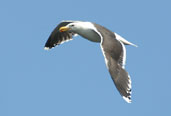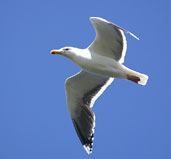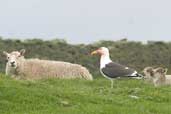
The Great Black-backed Gull is found around the coasts of western and northern Europe, Iceland and on the east coast of North America as far south as North Carolina. It usually breeds on the coast or small islands but can be found inland where there is little human disturbance.





